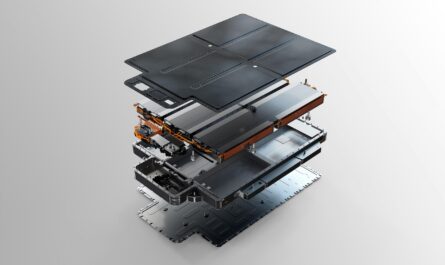Introduction to Energy Storage
By storing excess energy generated during off-peak times, storage allows energy to be tapped later when it’s needed the most. Modern stationary storage technologies let us better balance energy supply and demand at all times.
Batteries as the Dominant Storage Technology
Most Stationary Energy Storage today relies on large-scale batteries. Lithium-ion batteries in particular have seen explosive growth due to their relatively high energy density and long lifespan. They are commonly used for applications like smoothing intermittent solar and wind power. Other battery technologies are also growing rapidly, including lead-acid, sodium-sulfur, and flow batteries designed for long duration storage. Overall global energy storage is expected to grow over twenty-fold by 2030, driven primarily by battery deployments across the power sector.
Managing Variable Renewable Supply
One of the biggest contributions of stationary storage is allowing much higher integration of solar and wind power onto the grid. Renewables are variable by nature, but storage can capture surplus renewable energy produced during periods of peak generation and release it when generation drops off. This evens out the intermittency so that supply better matches shifting demand patterns. Grid operators are deploying large battery installations near solar farms and wind plants to handle rapid ramps in renewable output.
Providing Reserve Capacity and Frequency Regulation
Batteries are also well-suited to provide critical grid services that stabilize the system. They can discharge quickly to supply reserve capacity during contingencies like generator failures. Batteries connected to the distribution system participate in frequency regulation, injecting or absorbing power within milliseconds as needed to keep grid frequency precisely balanced. Utility-scale batteries contribute these “ancillary services” and earn revenue through participation in ancillary services markets.
Creating Microgrids and Resiliency
Off-grid and island communities have long relied on diesel generators for power, but their fuel costs and emissions are unsustainable. Renewable microgrids paired with energy storage can meet the same needs more cleanly and affordably. In addition, front-of-meter battery systems paired with critical loads like hospitals, water treatment plants and military bases allow these facilities operate independently during grid outages. Large stationary storage is becoming a vital tool for hardening infrastructure against natural disasters and other interruptions.
Improving Transmission and Distribution System Efficiency
Batteries strategically placed on the distribution network can avoid or delay costly upgrades by absorbing peak demand. They also enable more effective use of existing transmission assets. During periods of low demand, utilities can charge batteries then discharge power locally rather than transporting it long distances leading to line losses. Coordinated via advanced distribution management systems, this approach optimizes grid capacity and efficiency.
Facilitating Electric Transportation and Buildings
As electric vehicles and buildings powered by rooftop solar and heat pumps grow rapidly, they will place new loading patterns on the grid. Stationary batteries can supply those loads directly to reduce costs compared to expanding traditional wires infrastructure. In transportation, fleet operators are installing large centralized batteries at their facilities to charge EVs economically overnight and power operations during daytime peak hours. The rise of connected buildings or “energy hubs” integrated with storage will enhance customer energy choices.
Technical and Economic Challenges Remain
While the benefits of energy storage are compelling, significant technical and economic barriers still exist. Battery lifespans need to reliably exceed 15-20 years to be competitive against traditional grid assets. Costs must continue declining to penetrate more applications without subsidies. New chemistries are required to economically provide multi-day storage durations needed for 100% renewable grids. Further standardization and streamlining of interconnection and market participation processes would accelerate storage deployments. With ongoing technology innovations addressing these challenges, the role of batteries and other stationary storage options will only continue growing in modern power systems worldwide.
As renewable energy and distributed energy resources proliferate, stationary energy storage is providing crucial flexibility to maintain a reliable and resilient electricity supply. Batteries are leading the charge due primarily to scalability, fast response, and declining costs. With ongoing improvements, energy storage will increasingly supplant conventional generation assets and transform how we produce, transport, and utilize electricity for decades to come. As a central pillar of future grids, developing robust stationary storage infrastructures worldwide is vital for supporting sustainable and efficient energy systems globally.
*Note:
1.Source: Coherent Market Insights, Public sources, Desk research
2.We have leveraged AI tools to mine information and compile it




